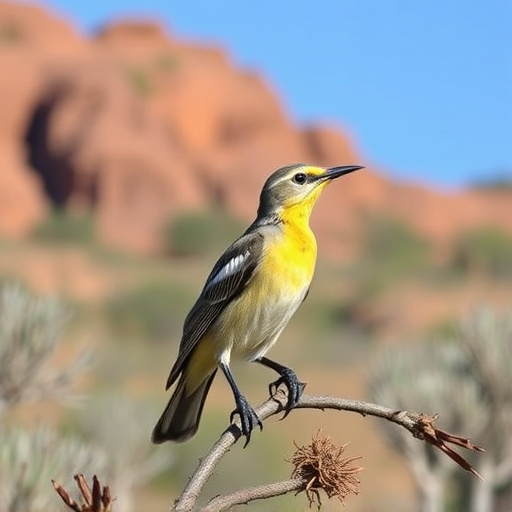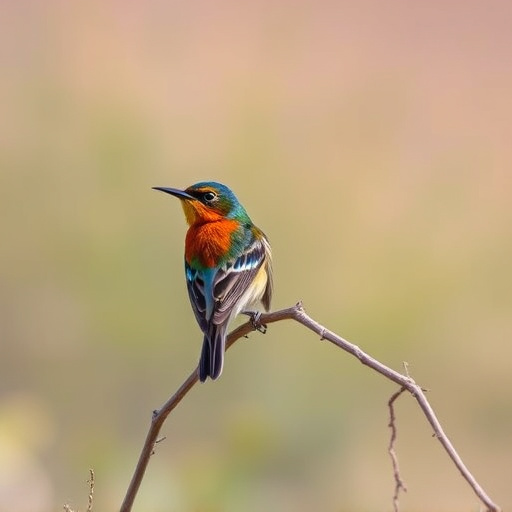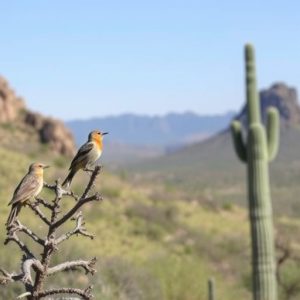“Discover the enchanting world of nightbirding in Southern Arizona’s breathtaking Cave Creek Canyon. This unique ecosystem becomes a haven for the elusive Whiskered Screech-Owl, attracting birders seeking an extraordinary experience. After dark, join guided tours to witness these nocturnal birds in action. Explore the canyon’s rugged terrain and uncover the mysterious behavior of these whiskered wonders. From their hunting techniques to mating rituals, this is a chance to delve into the hidden life of Southern Arizona’s avian treasures.”
- Birding Southern Arizona's Unique Ecosystem
- Exploring Cave Creek Canyon After Dark
- Unveiling the Nighttime Behavior of Whiskered Screech-Owls
Birding Southern Arizona's Unique Ecosystem

Southern Arizona’s diverse and unique ecosystem offers a thrilling experience for birders, making it an ideal destination for those passionate about avifauna. The region boasts a remarkable variety of bird species, from colorful desert birds to elusive nocturnal creatures. One such gem is the Whiskered Screech-Owl, a captivating owl that has made Cave Creek Canyon its home.
The area’s rugged terrain and diverse habitats create the perfect environment for a wide range of avian life. Birding enthusiasts can explore the canyon after dark, when the Whiskered Screech-Owl becomes most active. This elusive owl is known for its distinctive calls and unique appearance, with long whiskers that give it a fascinating, almost otherworldly look. Exploring Cave Creek Canyon at night provides an opportunity to immerse yourself in the natural beauty of Southern Arizona while contributing to conservation efforts focused on protecting these magnificent birds and their habitat.
Exploring Cave Creek Canyon After Dark

Cave Creek Canyon, located in the heart of southern Arizona, transforms into a captivating after-dark haven for nature enthusiasts and birders alike. After sunset, this rugged landscape becomes home to some of the region’s most elusive feathered inhabitants, particularly the Whiskered Screech-Owl. These nocturnal birds are masters of stealth, making their presence known only through subtle calls and the faintest movement in the darkness.
For those seeking an adventure in birding, taking a Cave Creek Canyon tour after dark offers a unique opportunity to witness these silent hunters in action. Local guides, equipped with specialized knowledge and night vision technology, lead small groups on hikes that navigate the canyon’s winding trails. As they move through the shadows, participants might catch glimpses of the Whiskered Screech-Owls perched on branches or scanning for prey, providing an unforgettable experience for birding enthusiasts exploring southern Arizona’s enchanting nighttime ecosystem.
Unveiling the Nighttime Behavior of Whiskered Screech-Owls

In the serene darkness of night, the Whiskered Screech-Owl comes alive, revealing a unique and captivating behavior that birders in southern Arizona eagerly seek to observe. These elusive owls are nocturnal hunters, preferring the cool tranquility of evening to engage in their hunting rituals. Their whiskered faces, adorned with intricate patterns, provide a dramatic contrast against the moonlit sky as they scan the surroundings for prey.
Tour guides in Cave Creek Canyon have mastered the art of guiding birders through this enchanting landscape after dark. With their extensive knowledge and experience, they lead enthusiasts to prime locations where Whiskered Screech-Owls are known to inhabit. By understanding the owls’ nocturnal patterns, these experts can enhance the birding experience, offering a chance to witness these magnificent creatures in their natural habitat.
Cave Creek Canyon offers a unique opportunity for birding enthusiasts in southern Arizona, especially after dark. Exploring this diverse ecosystem enables close encounters with elusive species like the Whiskered Screech-Owl. By participating in guided tours, visitors can uncover the owl’s nocturnal habits and contribute to conservation efforts. This experience showcases the region’s rich biodiversity and highlights the importance of protecting these natural treasures for future generations to enjoy.
